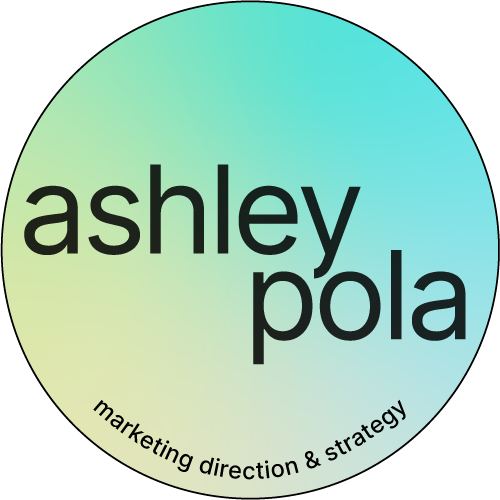Four Neuromarketing Tactics You Can Implement Now to Level-Up Your Brand
Neuromarketing is the application of neuropsychology to marketing — whether in market research, messaging, or design. While neuromarketing may sound complicated, you may find it to be not only simple but something you are already implementing.
Here are four practical ways to use neuropsychology in your marketing:

Photo by Kaboompics .com from Pexels
1. Visual Design
If you want to create a powerful reaction, focus on visual design. As our brains respond most strongly to the visual sense, design plays an important role in high-impact marketing. Have you ever immediately fallen in love with a website or product simply due to its aesthetic? This kind of visceral reaction comes from the part of our brain responsible for instinct. Visceral reactions are rooted in our DNA and are an unconscious reaction — in this case, to the visual input. Here are some guiding principles you can take into account in building your brand’s visual design:
The Gestalt Principlesare a set of psychological theories that explore the visual perception of elements in relation to each other, showing how people tend to unify and identify visual elements. For example, if many objects are close together, the brain sees them as a group (rather than individual objects).
Color psychologyis the study of how specific colors relate to specific emotional responses. An example of this is how blue is used in a lot of banking and healthcare brands — blue evokes calm, happiness, friendliness, and cleanliness. Using blue in branding can associate a brand with accountability and trustworthiness.
Jakob’s Lawstates that users spend most of their time on other websites and therefore prefer your site to work the same way as other sites they already know. Keeping this in mind, you should make your messaging clear and understandable. For example, it is universally recognized that the icon with three horizontal lines is the hamburger menu. Another name for this is a mental model: what we think we know about a system, especially about how it works. We need to keep this in mind when designing our brand (and especially website) for not only ease of use, but also a positive customer experience.

Photo by Startup Stock Photos from Pexels
2. Masterful Copywriting
There are many ways you can get your message out there. With messaging tied into everything (from your website, social media, sales pitches, and more), it is important to nail down exactly what you want to say and, importantly, how you will say it.
Perceptual contrast is a great way to amplify your message. Use contrast in your headlines, website copy, and sales pitch to attract attention, add interest, and persuade. For example, your audience may be dealing with an unideal situation, but your product will make their situation great. You want to present this as a before and after story to juxtapose the contrast in the experience that your product will provide. This can work to help motivate action in an audience that is hesitant to adopt your product or can help illustrate exactly how it will solve their problems. Additionally, using this tactic can completely change your audience’s perception of your product or brand, even though there has been no fundamental change.
Superlatives, beginnings, and ends strongly influence our brains, as these tools break the patterns it is used to. Right at the beginning of your message, start with a pithy lead and a ‘first’. This is when your brain is paying attention. Be direct and use your words intentionally, then close strong.
Use concrete language to get your point across. Concrete language evokes a response tied directly to real experience. While abstract language can be beautiful and interesting, it refers to something you’ve never experienced with your senses. Your brain far prefers concrete language to abstract. For example, rather than just using language like “increased productivity”, use a chart visual to make the idea more concrete.

3. Make it Emotional & Personal
Your goal in marketing is to create emotion. Emotion is how videos go viral and brand advocates are created. Having an emotional response shows your brain that the message is important and therefore helps make memories stronger — your brain uses emotion to determine what ought to be remembered. Utilize emotion, or pathos, in your message, speaking style, design, and brand identity. Think about what you want your audience to feel. Not just about the product, but in general. If you can make them feel emotion, your message will be memorable far after they’ve left your webpage.
Make it personal. Our brains are inherently self-centered. We see the world from a first-person perspective and our brains adapt us-vs-them heuristics to help promote our survival. We need to speak directly to our audience, or we will be seen as outsiders (or, not part of the “us” tribe). Use direct “you” or “we” phrasing to make your writing personal and show you are part of their team. This creates a personal narrative and helps your audience understand not only how the product benefits them functionally, but emotionally.

Photo by Andrea Piacquadio from Pexels
4. Simplicity
The last thing you want to do is overwhelm your audience. Beyond just taking away from your core message and goal, this will also hurt your brand’s engagement, conversion, and customer satisfaction. Simplify your message and focus on the things that are different about your product. Here are two laws guiding how you can keep it simple:
Hick’s Law states that increasing the number of choices will increase the decision time logarithmically. Simply said, with UX design, less is often more. If you want your audience to do a certain action, don’t offer several other actions on the same page. A good rule of thumb is one CTA per landing page (maybe two).
Miller’s Law states that the average person can only keep seven (plus or minus two) items in their working memory — again, keep it simple. Focus on the message you want to get across and omit the extra noise. Additionally, organize content into smaller chunks to make it more digestible. Lists and bullet points make for an easy reading experience and can help your audience absorb your message.

Photo by Startup Stock Photos from Pexels
There is no exact science to marketing, but we can apply neuropsychology to leverage our audience’s innermost tendencies and biases. To learn more about the latest in neuromarketing, check out this great article by Forbes.
About Ashley Pola
Currently leading marketing at Vave Health, a company revolutionizing the medical device industry with pocket-sized ultrasound devices that connect to your smartphone. Before joining Vave, I led global marketing at Ekso Bionics (creators of robotic exoskeletons for rehabilitation patients and industrial workers) and have worked with brands like Tesla, Saks Fifth Avenue, Michael Kors, SF International Film Festival, and Tart Collections.
For speaking engagements, please contact me at ashley@vavehealth.com.


